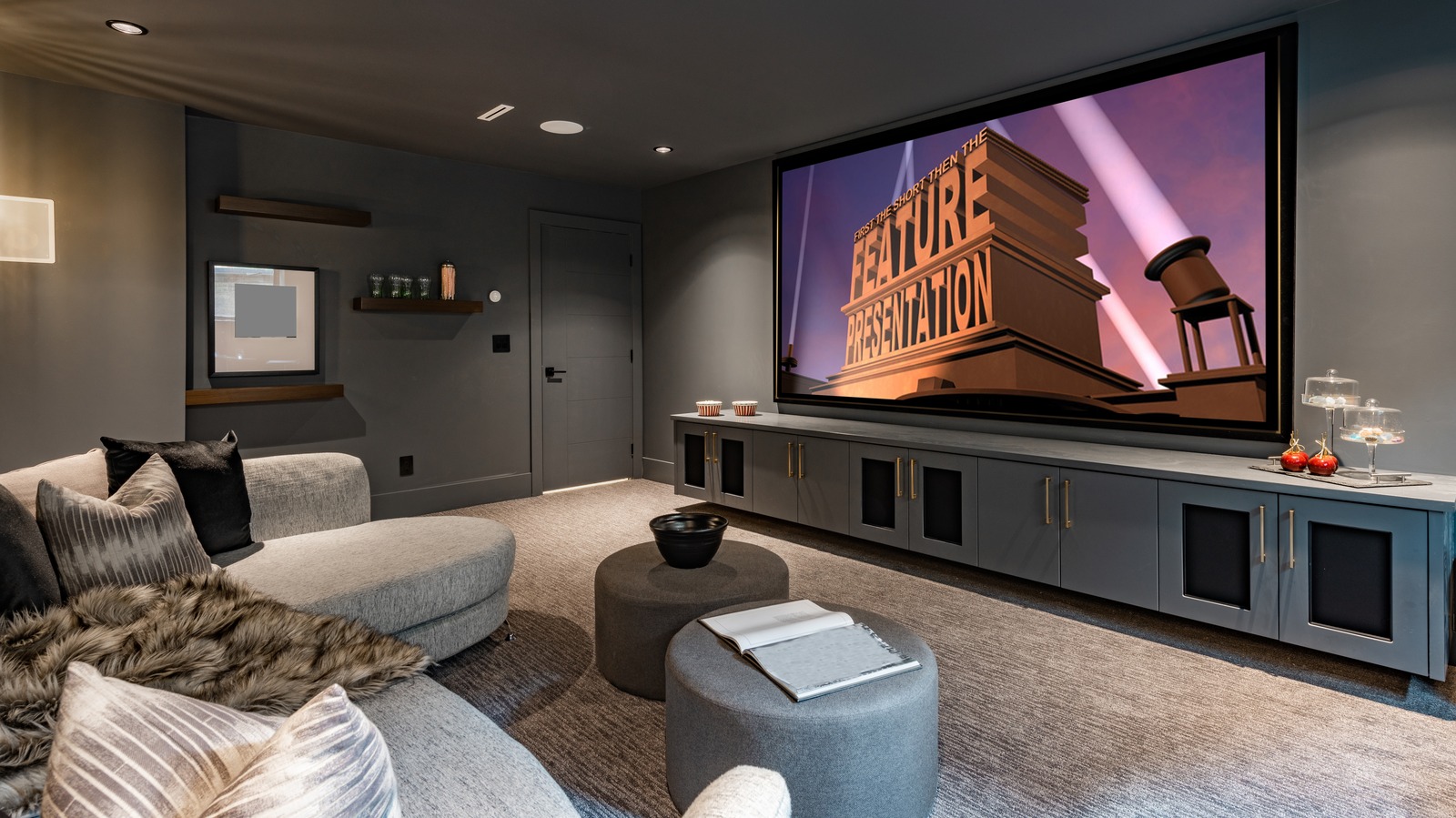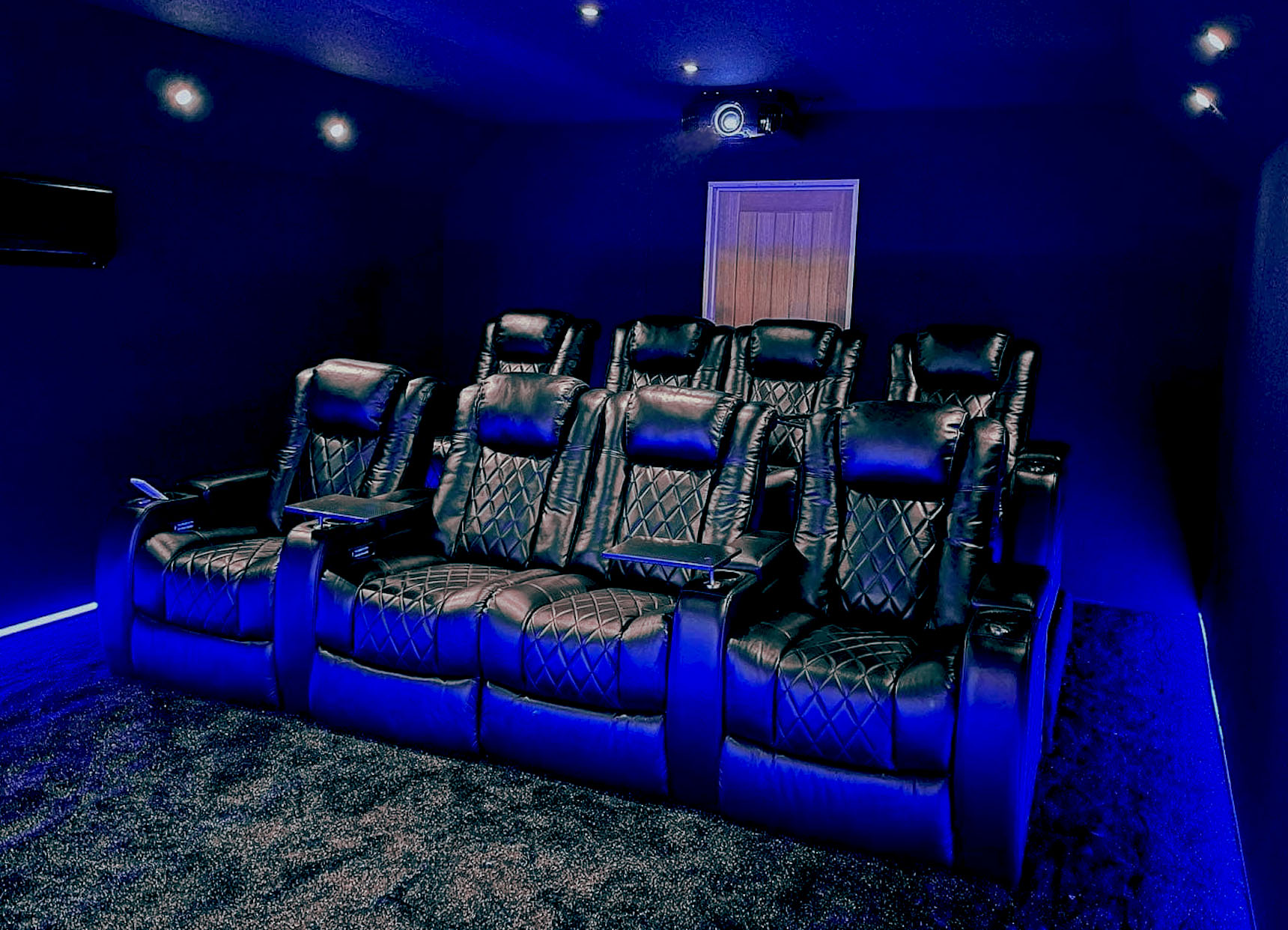How to Discover the Top Home Theater Tampa Installation Experts
How to Discover the Top Home Theater Tampa Installation Experts
Blog Article
Home Theater 101: Everything You Need to Know for a Cinematic Experience at Home
Developing a home theater that equals the cinematic experience of a commercial theater entails mindful factor to consider of multiple elements, including screen option, audio systems, and room format. Each component plays a crucial role in accomplishing the desired setting and functionality. Whether you are contemplating the ideal screen dimension or the details of surround audio, comprehending these principles is vital. As we check out these important elements, it becomes obvious that the selections made can considerably affect your overall viewing experience, leaving one to consider how these choices will certainly form your personal movie theater.
Picking the Right Screen
When establishing a home movie theater, selecting the best screen can make or break the checking out experience - home theater tampa. The screen offers as the centerpiece of your configuration, affecting photo top quality, seeing angles, and general aesthetic. Key factors to take into consideration consist of screen type, resolution, and dimension
First, figure out the suitable display dimension based on your room measurements and seating range. Next off, select between numerous display types, such as fixed-frame, mechanized, or retractable screens, each offering distinctive benefits.
Resolution is an additional critical factor. For a genuinely immersive experience, think about a display designed for 4K or even 8K content, making certain intensity and clearness. Furthermore, think about the screen's gain, which influences brightness and contrast; a greater gain can boost illumination in well-lit spaces, while a lower gain may be a lot more suitable for darker atmospheres.
Picking Sound Equipment
Audio devices is an important part of any kind of home movie theater system, significantly improving the total viewing experience. The selection of audio equipment can identify the depth, clearness, and immersion of audio, critical for producing a cinematic atmosphere.
When picking audio equipment, think about a surround stereo, which typically consists of a receiver, numerous speakers, and a subwoofer. A 5.1 or 7.1 channel system is recommended, where the very first number represents the audio speakers and the 2nd the subwoofer, supplying an immersive soundscape. The receiver is the heart of the system, managing audio and video clip signals, and must sustain contemporary formats like Dolby Atmos for an enhanced spatial experience.
Quality speakers are crucial; search for models that provide a well balanced audio account with excellent bass reaction. Floor-standing audio speakers can generate richer noise, while shelf choices conserve space. In addition, consider cordless choices for ease of installation, although wired systems usually supply exceptional performance.

Optimum Seating Plans
Developing an ideal home theater experience pivots substantially on ideal seating plans. The plan of seats plays a crucial duty in both convenience and watching quality, directly impacting the overall motion picture experience.
First, take into consideration the screen dimension and checking out distance. An usual standard is to place seats at a distance roughly 1.5 to 2.5 times the angled dimension of the screen. This ensures an immersive experience without stressing the eyes.
Next, altitude is crucial. The back rows should be higher than the front to stay clear of obstructions if your seats is in a tiered style. For flat seating, make certain that the front row is not as well near the display, and that every person has a clear line of vision.
Additionally, think about the arrangement in regards to social dynamics. Team seats can enhance the common experience, while individual seats might be liked for personal viewing.

Last but not least, focus on convenience with ergonomic seating that supports extended watching periods. Integrating reclining chairs or cushioned seats can significantly improve the experience, making the home theater a preferred location for both enjoyment and leisure.
Lighting and Atmosphere
Effective illumination and setting are important parts of a properly designed home cinema, as they substantially affect the checking out experience. The appropriate illumination can boost the cinematic feel, while poor choices can detract from it. For ideal outcomes, consider a layered lights approach that consists of ambient, job, and accent lights.
Ambient illumination gives basic illumination, guaranteeing that the room is not totally dark, which can stress the eyes. Dimmer buttons are highly recommended, enabling changes based upon the content being seen. Job lighting, such as wall sconces or floor lamps, supplies functional illumination for activities like analysis or navigating the room without disrupting the general environment.
Accent lights can be made use of to highlight building functions or produce centerpieces, adding deepness and rate of interest to the room. LED strip lights behind displays or along racks can offer a subtle glow that improves the visual experience without frustrating the customer.
800w.jpg)
Wiring and Installation Tips
A tactical electrical wiring setup is vital for accomplishing ideal performance in your house theater system. Appropriate wiring not just guarantees high-grade audio and video clip signals however also improves the overall visual of your area. Begin by mapping out your design, determining where each component will certainly be put, including your screen, audio speakers, and receiver.
When visit their website picking cords, view prioritize high-quality, properly assessed wiring to lower signal loss. HDMI cords should be utilized for video links, while speaker cord ought to match the specs of your speakers and amplifier. Choose in-wall ranked cable televisions to follow safety and security requirements and keep a clean appearance.

Conclusion
In recap, creating an exceptional home movie theater experience requires mindful factor to consider of different components, consisting of screen option, audio equipment, seating setups, lighting, and circuitry. Each element plays an essential function in attaining ideal efficiency and atmosphere, inevitably enhancing the pleasure of home amusement. By prioritizing these variables, a cinematic environment can be efficiently replicated, enabling immersive seeing experiences that equal traditional movie theater setups. Focus to detail in each location is crucial for overall fulfillment.
Developing a home movie theater that equals the motion picture experience of an industrial theater includes careful factor to consider of numerous parts, consisting of screen choice, audio systems, and area format.When establishing up a home movie theater, choosing the appropriate display can make or damage the seeing experience. Next, select between different display types, such here as fixed-frame, motorized, or retracting screens, each offering distinct benefits. For an absolutely immersive experience, take into consideration a display created for 4K or also 8K content, making sure intensity and quality.In recap, producing an outstanding home movie theater experience requires cautious factor to consider of numerous aspects, consisting of screen selection, audio tools, seating plans, lighting, and electrical wiring.
Report this page